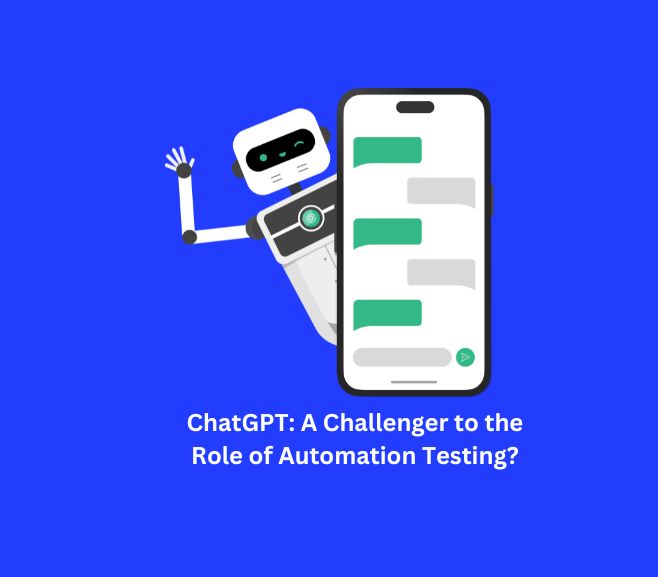There are certain inventions that define specific eras or moments in history. One of those recent, fleeting advances in natural language processing that is sweeping the internet is ChatGPT.
Within 5 days of its debut, ChatGPT had amassed 1 million users. OpenAI created this conversational AI tool that can respond to questions in natural language, create descriptive content, and carry out difficult tasks.
ChatGPT offers an algorithm that facilitates the processing and analysis of sizable datasets and the generation of responses as a language model.
A unique feature of ChatGPT is its ability to create test cases in a variety of frameworks and languages. Consequently, it makes it possible for web and mobile app developers to maximize it.
You will discover more about how to use this platform to write code in various programming languages with the help of this blog post.
Let’s start now! You will discover more about how to use this platform to write code in various programming languages with the help of this blog post.
Let’s start now!
The Characteristics of ChatGPT
The Generative Pre Training (GPT-3.5) chatbot, on which ChatGPT is based, generates articulate answers to inquiries on a variety of subjects.
To analyze the data, comprehend natural language patterns, and incorporate words in context, ChatGPT uses AI and ML algorithms. You are free to ask ChatGPT any questions you want and engage in back-and-forth conversation.
To produce cogent responses to your inquiries, the platform automates creative responses and can recall prior conversations.
AI & ML in Software Testing
Cross-browser and cross-platform testing are just two of the new capabilities that QA testers now have access to, thanks to the adoption of AI and machine learning technologies.
These technologies have greatly improved the capabilities and skill sets of QA testers and assisted them in removing testing discrepancies.
Here are some advantages of incorporating AI into software testing:
1. Increased Precision
Mistakes made during manual testing can be found by automated testing. AI has powerful testing methodologies that can assist you in creating test scripts and providing the best UX, which will increase accuracy and speed.
2. Faster Test Creation
Intelligent test recorders perform better and are more effective thanks to AI. AI tools can be used to track user sessions and locate missing test cases. If a test case is discovered to be lacking, they may also add tests to the library.
3. Faster Time To Market
Manual test execution is time-consuming because development teams frequently need to modify the program’s source code. Automated testing can be accelerated using AI, which can also reduce overall costs and hasten the release of new applications.
What Impact Can Chatgpt Have On The Testing Sector?
Everyone is now unsure whether language search models will eventually replace Google search due to the development of AI chatbots. For search marketing professionals, the idea of a chatbot replacing Google search is potentially terrifying.
If they don’t scale AI, 75% of executives already worry about going out of business within five years.
We also live in a time when AI bots are reducing delivery times, speeding up source code updates, and cutting down on the amount of time needed for “Continuous Testing.”
Although the majority of businesses have begun utilizing the fundamental AI concepts, it is necessary to continue testing in order to reach the level of efficiency needed for testing robotics, IoT, and other emerging technologies.
Additionally, with new IoT devices and software being created every day, there will be an enormous amount of real-time data that needs to be inspected. AI and ML are helpful technologies that assist businesses in scaling and prioritizing software quality to address such issues.
Here’s how ChatGPT can effectively enable test automation.
Test Automation Using ChatGPT
The question is, can ChatGPT be used to generate code for automated testing, given that we discussed how it can generate properly formatted and pertinent code in many languages?
ChatGPT can write Selenium in a variety of languages, but in order to write accurate codes, someone would need to give ChatGPT a description of the test. It seems necessary to enter significant details in your query since this conversational AI has a chat-like interface in order to generate flawless, executable code that wouldn’t require any adjustments. Currently, most organizations are into test automation services that help them streamline their software testing processes, increase test coverage, and accelerate the release of high-quality software products.
Let’s look at one application of ChatGPT for Cucumber code generation.
ChatGPT and Cucumber Test Case
Cucumber is actually a testing framework that uses behavior-driven development. In a feature file, some keywords like “given,” “when,” and “then” are compiled.
These common phrases are connected to the automation code in step definitions. This aids Cucumber in fusing a test’s automation code and natural language intent.
This example demonstrates the ability of ChatGPT to generate code. With just one prompt, Cucumber executed the scenario and step definitions simultaneously. Without being told specifically, ChatGPT is already aware of the various parts Cucumber requires to function.
The website’s prompt for what to test seems a little hazy. Nevertheless, ChatGPT was able to produce a script to evaluate the Google website’s search functionality.
Wrapping Up
In order to overcome the difficulties QA testers encounter when testing applications, AI tools and frameworks will play a significant role in the future of test automation. A step toward making software testing more effective, intelligent, and time-saving is the use of AI. ChatGPT, which is on its way to becoming one, is a significant natural language model that will advance AI technology in the field of software testing. Low-code testing solutions are also more likely to be developed to address a variety of testing issues.




